Have you ever wondered how mastering technical indicators could potentially transform your trading decisions?
Understanding the intricacies of these 7 essential tools can be the key to unlocking a deeper understanding of market dynamics and honing your forecasting abilities.
By delving into this comprehensive guide, you'll gain valuable insights into the world of technical analysis and learn how to leverage these indicators effectively to navigate the complexities of the financial markets.
Definition and Purpose of Technical Indicators
Technical indicators play a crucial role in analyzing stock performance by utilizing mathematical calculations on price, volume, or other metrics to predict future price movements based on historical data. One of the most commonly used technical indicators is the moving average, which smooths out price data to identify trends over a specific period.
Stock trading heavily relies on technical indicators to make informed decisions, such as identifying potential reversals or confirming trends. These indicators provide traders with valuable insights into market dynamics, helping them to pinpoint optimal entry and exit points.
Understanding how technical indicators function is essential for successful trading, as they serve as valuable tools for interpreting and acting upon market signals effectively.
Types of Leading Indicators
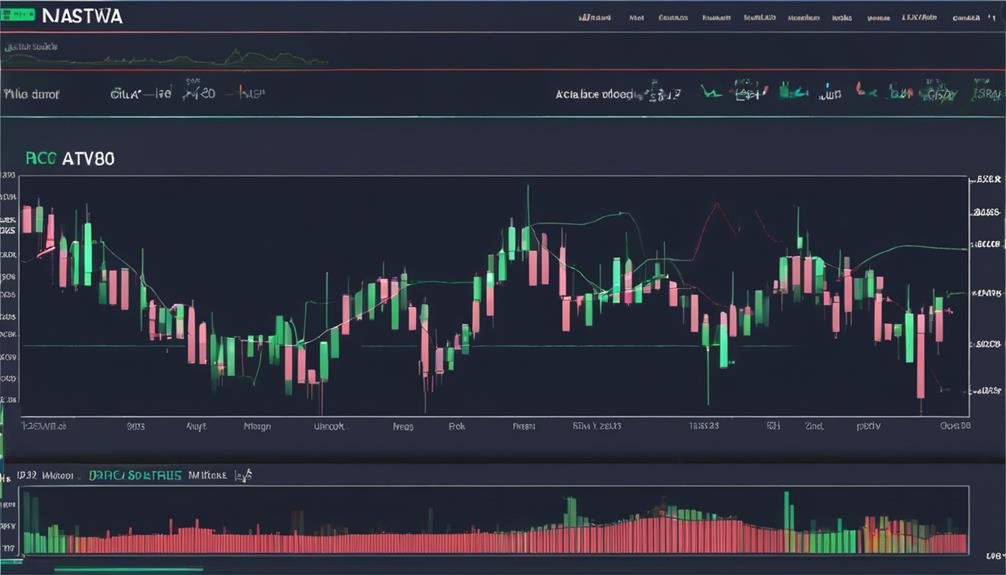
Leading indicators give traders early signals for potential entry and exit points in trading, aiding in predicting price movements before they occur. Examples of leading indicators include the Relative Strength Index (RSI) and Stochastic Oscillator. These tools help traders anticipate market trends and make informed decisions by providing insights into the momentum and strength of price movements.
Pros and Cons of Momentum Oscillators
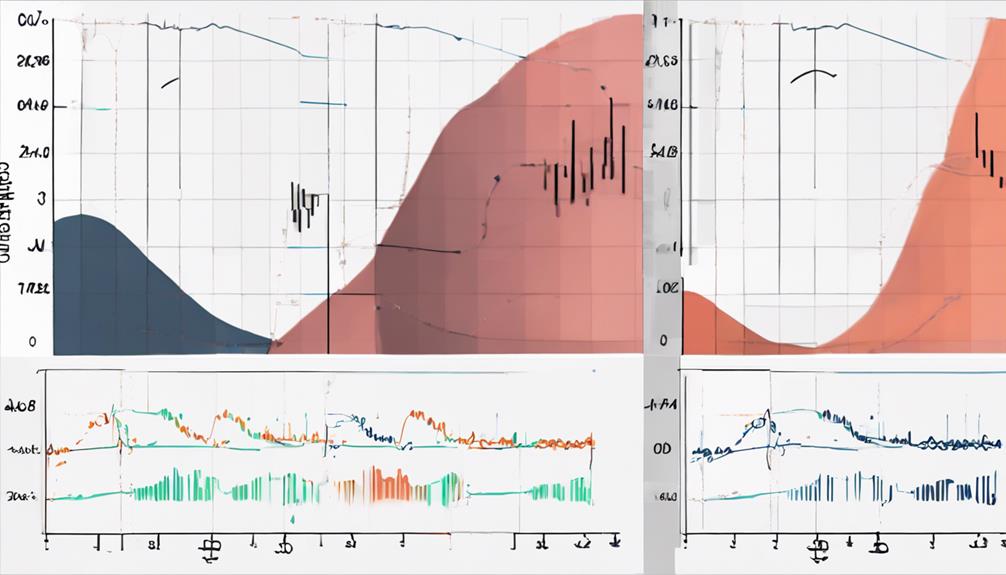
When considering momentum oscillators like RSI and Stochastic, it's crucial to weigh the advantages and drawbacks they present in trading scenarios. These indicators, such as the Relative Strength Index (RSI) and Stochastic oscillator, excel at identifying overbought and oversold conditions, aiding traders in pinpointing potential reversal points.
Their sensitivity to short-term price changes allows for timely signals, enabling traders to make informed decisions. Additionally, momentum oscillators are widely used for trend confirmation, helping traders assess the strength of a price trend. However, one must be cautious as these indicators can sometimes give false signals during ranging markets.
Despite this drawback, incorporating RSI and Stochastic into your trading arsenal can provide valuable insights for navigating dynamic market conditions.
Understanding Lagging Indicators
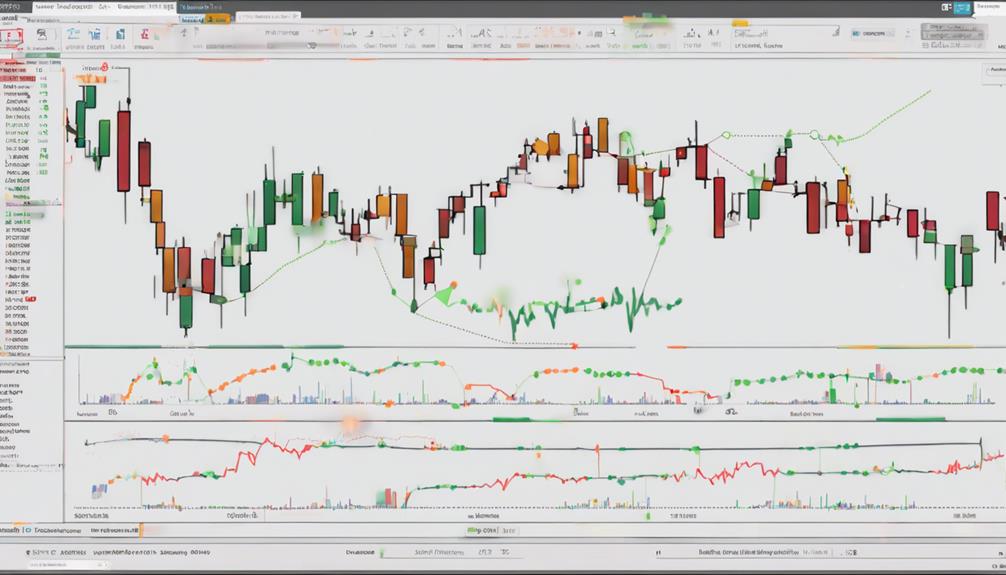
Lagging indicators, also referred to as trend-following indicators, offer insights into market trends after their initiation. These indicators provide signals that confirm trends that have already begun. Examples of lagging indicators include moving averages and MACD.
Here are four key points to consider when using lagging indicators:
- Lagging indicators give signals after a trend has already started.
- They're useful for confirming trends that are in progress.
- Traders often use lagging indicators to validate the direction of a trend.
- While lagging indicators can confirm trends, they may lead to late entries or exits in the market.
Analyzing Indicator Challenges
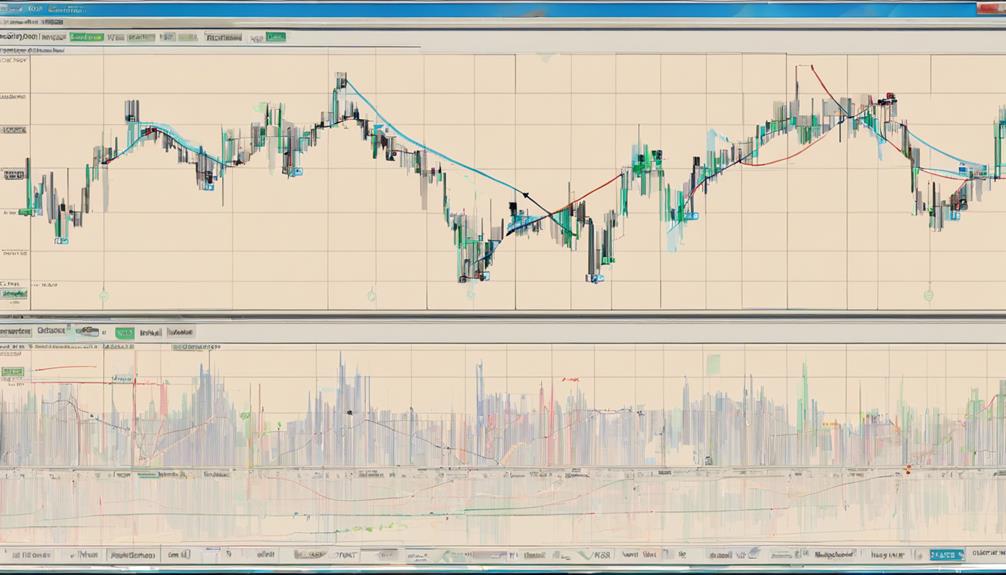
When facing indicator challenges, you must be aware of common issues like false signals or lagging information that can impede your analysis.
Overcoming these obstacles requires honing your skills in interpreting indicators accurately within the context of your trading strategy.
Balancing the complexities of multiple indicators while maintaining clarity is a skill that can be refined through experience and diligent testing.
Common Indicator Issues
To navigate the complexities of trading indicators effectively, it's essential to address and understand the common challenges that arise, such as false signals and indicator lagging impacting the accuracy of trading decisions. When dealing with technical indicators, you may encounter issues like whipsaws, where sudden price reversals can trigger misleading signals.
Moreover, overfitting indicators to historical data might lead to suboptimal performance in real-time trading situations. Another common problem is indicator saturation, which occurs when using an excessive number of indicators, potentially causing conflicting signals and confusion in decision-making.
Overcoming Analysis Obstacles
Overcoming analysis obstacles in trading requires a comprehensive understanding of the limitations of technical indicators and the dynamic nature of market conditions. Effectively navigating these challenges entails recognizing indicator limitations and adapting strategies to varying market conditions.
To enhance analysis accuracy, one must carefully select indicators based on the current market environment and test them both individually and in combination. By avoiding indicator overload and focusing on the most relevant indicators, traders can streamline their analysis process and make more informed decisions.
It's essential to remain vigilant of nominal and anomaly indicator conditions, as this awareness is crucial for overcoming analysis obstacles and achieving success in utilizing technical indicators effectively.
Utilizing Technical Indicators Effectively
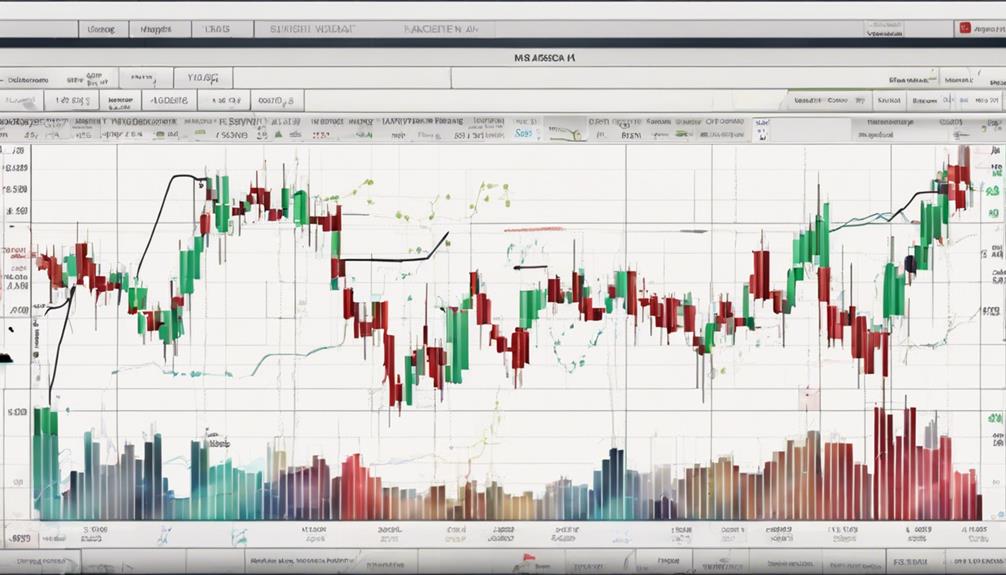
You must carefully choose the right indicators to align with your trading strategy, interpret signals accurately to make informed decisions, and time your entry and exit points effectively for successful trades.
Balancing these aspects can lead to a more comprehensive understanding of market movements and improved trading outcomes.
Choosing Right Indicators
Appropriately selecting technical indicators tailored to your trading style and objectives is paramount for maximizing their effectiveness in guiding your trading decisions. To choose the right indicators, consider the types of indicators used to generate signals on a stock chart, understand what each indicator shows (such as overbought and oversold conditions), and how traders often use indicators for decision-making.
Test indicators individually and in combination to assess their performance under various market conditions. Avoid overwhelming yourself with too many indicators; focus on 2-3 key ones that offer valuable insights. It's crucial to align your choice of indicators with your risk tolerance and financial situation before incorporating them into your trading strategy.
Interpret Signals Accurately
Understanding the interpretation of technical indicators plays a vital role in accurately analyzing signals for effective trading decisions. By interpreting signals correctly, traders can identify market trends and potential price reversals. Utilizing multiple indicators for signal analysis provides confirmation and increases the accuracy of predictions.
Interpreting signals accurately is essential for developing successful trading strategies that adapt to changing market conditions. It enables traders to make informed decisions, improve their timing for entry and exit points, and ultimately enhance overall performance. Proper signal analysis based on technical indicators empowers traders with valuable insights, helping them navigate the complexities of the financial markets with confidence and precision.
Timing Entry and Exit
Effectively utilizing technical indicators is paramount for precise timing of entry and exit points in trading, maximizing profit potential. When considering timing entry and exit, it's essential to focus on:
- Utilizing price action alongside technical indicators for accurate buy and sell signals.
- Identifying key support and resistance levels to determine optimal entry and exit points.
- Incorporating moving averages to smooth out price fluctuations and confirm trends.
- Utilizing the Relative Strength Index (RSI) to gauge overbought or oversold conditions and potential trend reversals.
Integrating Indicators With Trading Strategies
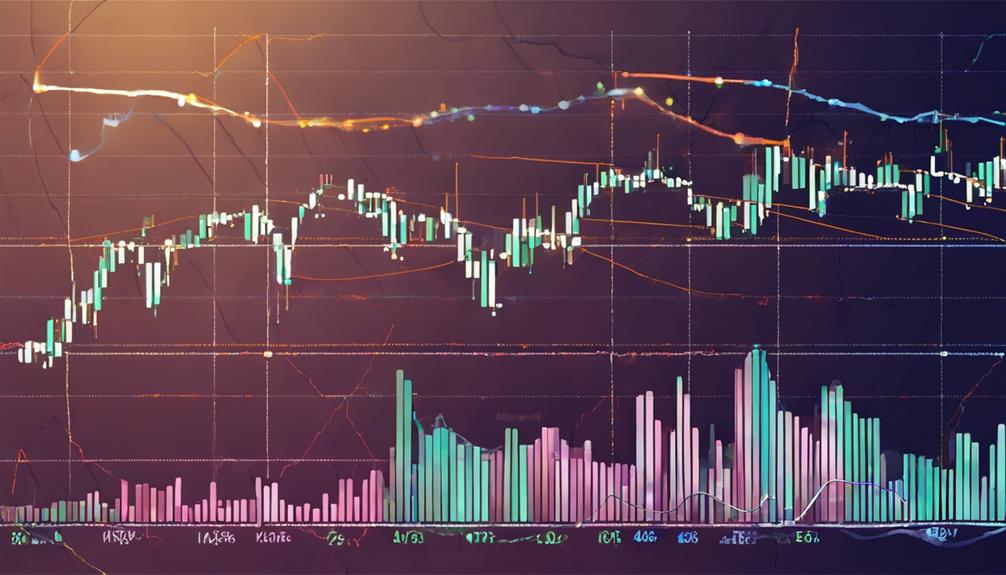
Integrating technical indicators with trading strategies enhances decision-making by providing confirmation signals. By combining indicators with chart patterns, traders can gain a more holistic view of prevailing market conditions.
Understanding how different indicators complement each other is crucial for developing a robust trading strategy. Using indicators for determining entry and exit points can refine trade timing and boost profitability.
Moreover, integrating indicators with effective risk management strategies is essential for controlling and reducing potential losses. This synergy between technical indicators and trading strategies empowers traders to make informed decisions, capitalize on market opportunities, and navigate risks more effectively.
Can You Explain the Technical Indicators in More Detail?
Understanding essential technical indicators introduction is crucial for successful trading. These indicators include moving averages, RSI, MACD, and Bollinger Bands. Moving averages show trend direction, while RSI and MACD indicate momentum. Bollinger Bands help identify volatility. Mastering these indicators can lead to improved decision-making in the stock market.
Frequently Asked Questions
What Are the Four 4 Basic Principles of Technical Analysis?
You should know that the four basic principles of technical analysis are: the market discounts everything, price moves in trends, history repeats itself, and price movement is not random. Understanding these principles is crucial for trading success.
Which Technical Indicator Is the Most Accurate?
In trading, no single technical indicator reigns as the most accurate universally. Consider combining indicators to enhance signal reliability. Factors like timeframe, asset class, and market volatility influence accuracy. Always validate indicators through backtesting.
How Does the Aroon Indicator Work?
The Aroon indicator assesses the time since a security hit a high or low. Comprising Aroon-Up and Aroon-Down lines, fluctuating from 0 to 100. Aroon-Up signals time since the peak, Aroon-Down time since the low. Traders utilize it to spot trends and their strengths.
How Do You Use Obv?
To use OBV effectively, analyze volume trends alongside price movements. Rising OBV with prices indicates buying pressure, while falling OBV with prices suggests selling pressure. Watch for OBV divergences with price for potential reversals or trend continuations.
Conclusion
In conclusion, mastering the use of technical indicators is crucial for enhancing your trading strategies. By understanding the different types of indicators, their strengths, and limitations, you can make more informed decisions in the market.
Combining these indicators with effective trading strategies will help you navigate the complexities of price movements and improve your overall success as a trader. Stay diligent in your analysis and continue to refine your use of technical indicators to stay ahead of the game.
